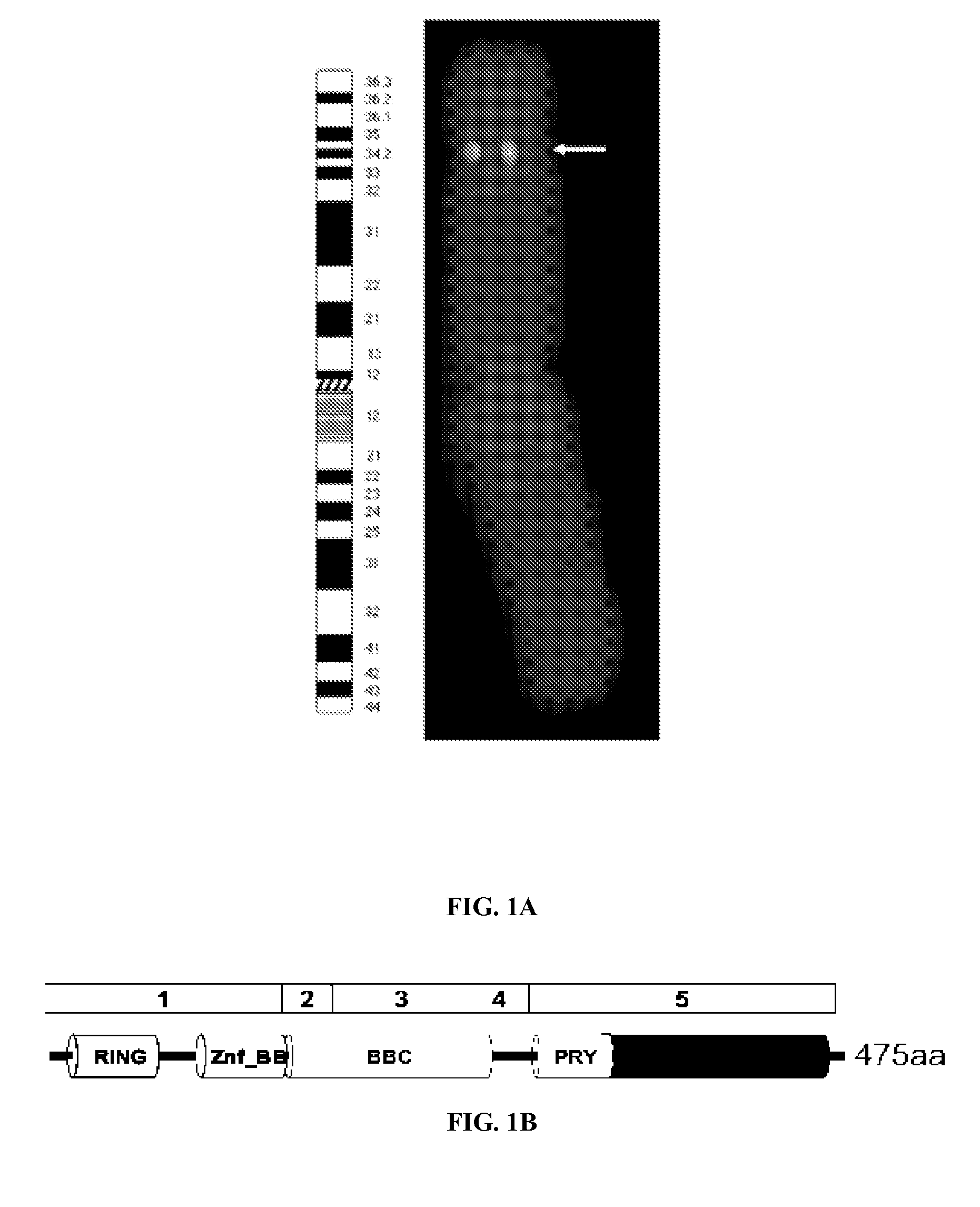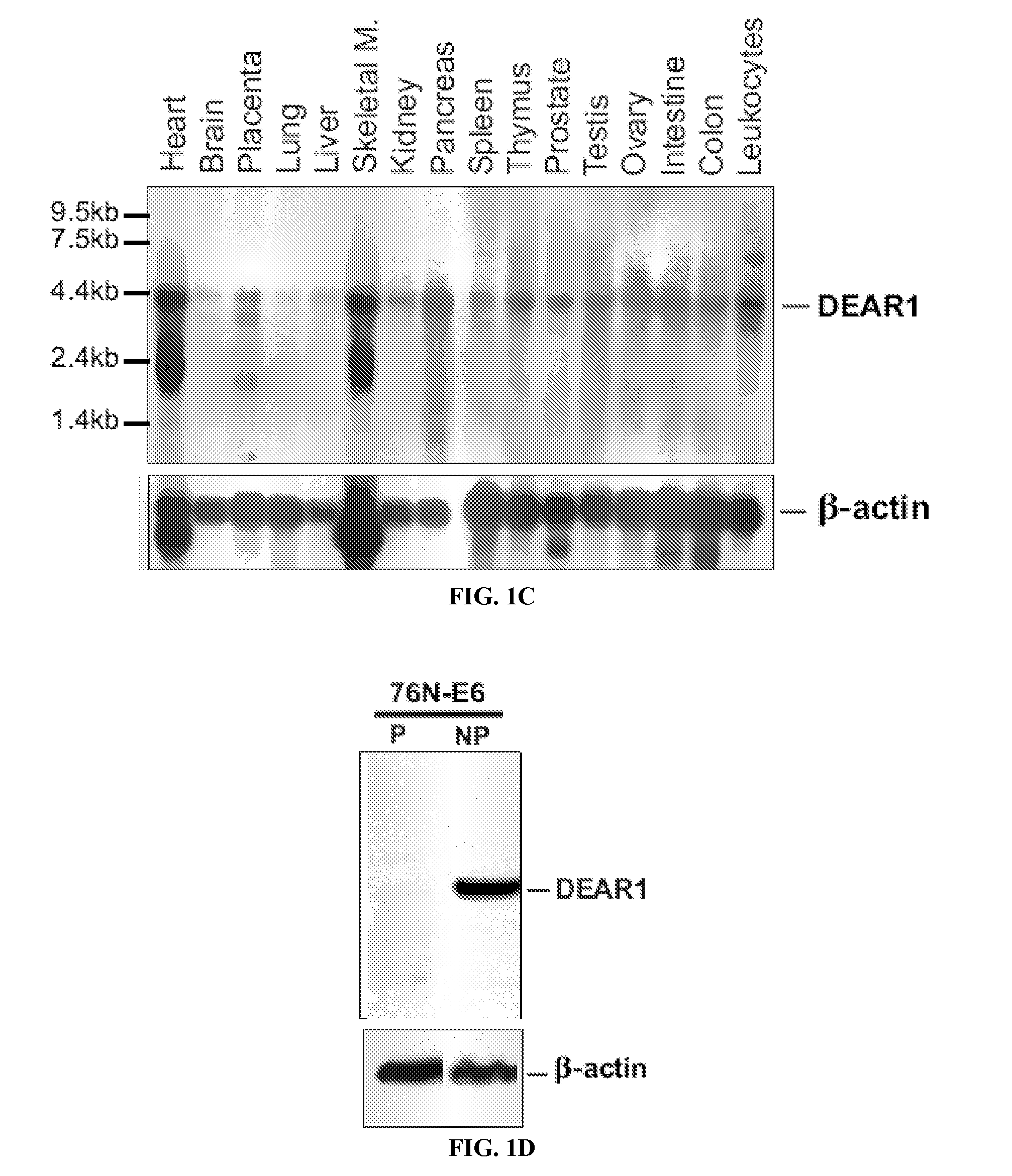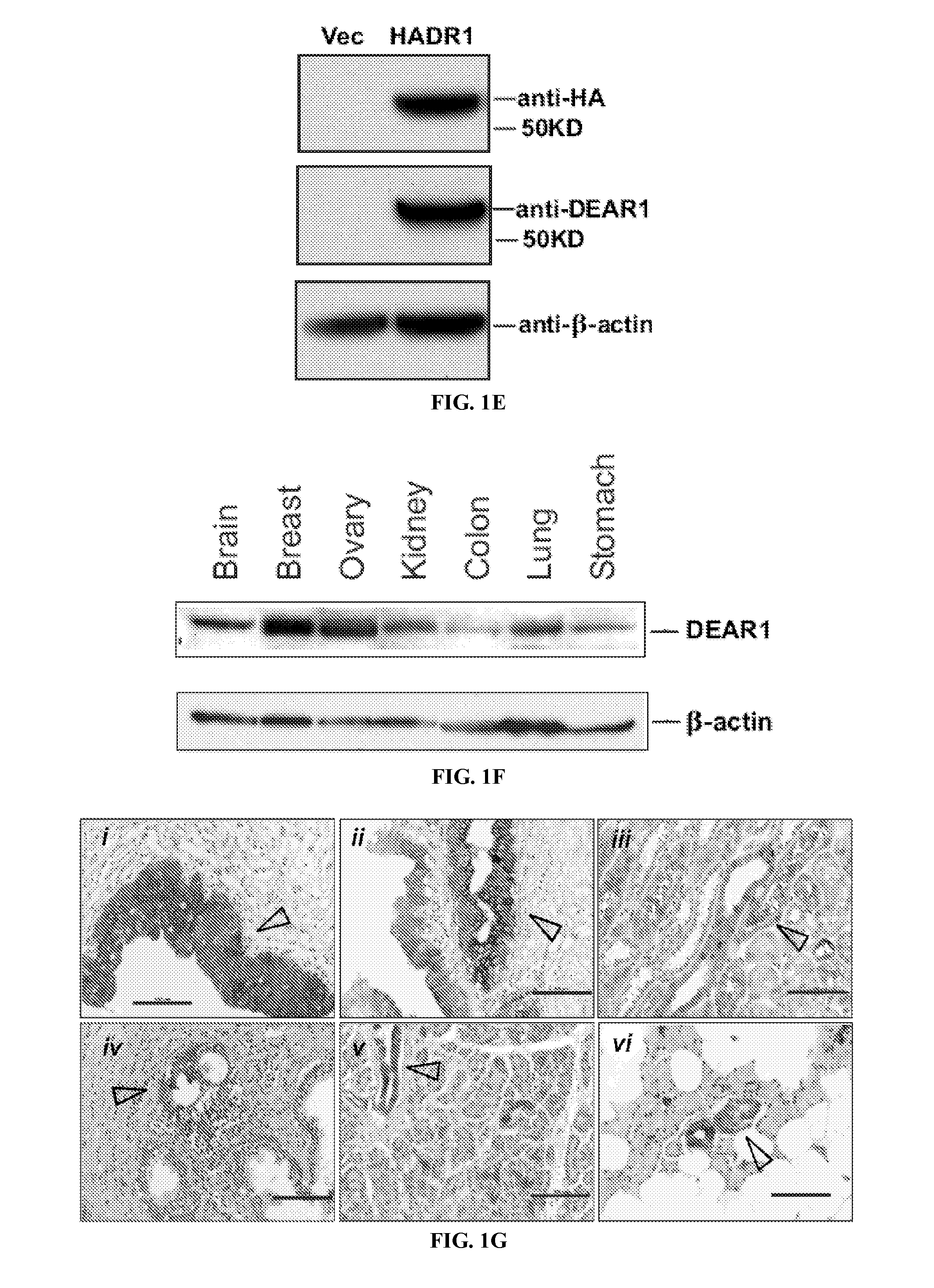Assay for the detection of recurrence in breast cancer using the novel tumor suppressor dear1
a breast cancer and novel technology, applied in the field of breast cancer diagnosis and prognosis, can solve the problem of relative few options available, and achieve the effects of increasing aggressive surveillance and/or treatment, and assessing the risk of recurren
- Summary
- Abstract
- Description
- Claims
- Application Information
AI Technical Summary
Benefits of technology
Problems solved by technology
Method used
Image
Examples
example 1
DEAR1 is a RBBC / TRIM Family Member Mapping into a Region of LOH in Breast Cancer within Chromosome 1p35.1
[0230]One of the most studied genomic intervals in human cancer lies within the short arm of human chromosome 1 in which loss of heterozygosity (LOH) within three separate intervals occurs at high frequency in a variety of epithelial cancers, including both sporadic breast cancers and breast cancers with inherited predisposition (Borg et al., 1992; Milikan et al., 1999; Ragnarsso et al., 1999; Reddy et al., 1992). LOH within chromosome 1p has been shown to predict poor prognosis in node negative breast cancers and allelic deletions in the 1p36 and 1p32 region have been found to correlate with poor survival (Reddy et al., 1992).
[0231]In the screening of cDNAs obtained from a suppression subtractive hybridization library (FIG. 11), a 700 bp cDNA having significant similarity to a RING finger protein (3.9×10−18) was identified that mapped by fluorescence in situ hybridization (FISH)...
example 2
DEAR1 Expression
[0234]DEAR1 expression is limited to the ductal and glandular epithelium in normal tissues. DEAR1 is detected as a 4.4 kb primary transcript in multiple tissues on Northern analysis with other smaller transcripts expressed in either a developmental or tissue-specific pattern in skeletal muscle, placenta, brain and heart (FIG. 1C). Affinity purified anti-peptide antibodies were generated to the amino terminus of the DEAR1 protein. Peptide blocking experiments, performed in HMECs to confirm the specificity of the novel antibody, were indicative that the N-terminal DEAR1 antibody detects the predicted 54 kD full-length protein and that binding is specifically competed away in the presence of excess DEAR1 peptide (FIG. 1D). In addition, transient transfection assays using HA-tagged DEAR1 constructs introduced into 293T cells specifically detected the appropriate sized transcript (FIG. 1E). Western analysis confirmed that DEAR1 is expressed in all normal tissues analyzed ...
example 3
DEAR1 is Mutated and Deleted in Breast Cancer
[0236]Mutational analysis was conducted on twelve breast cancer cell lines (itemized in Methods) as well as three cell lines of the 21T series (21NT, 21PT and 21MT) by DHLP and direct sequencing. Significantly, all of the cells lines in the 21T series contained identical nonconservative missense mutations in exon 3 within codon 187 (CGG→TGG, R187W) in the coiled-coil domain not observed in 136 normal alleles or the SNP database (FIG. 3A). The mammary epithelial cell strain (H16N-2) derived from normal breast epithelium of the same patient as the 21T series lines, did not contain the codon 187 mutation, indicative that the genetic alteration in the 21T series is not a rare polymorphism, but rather a tumor-derived mutational event (FIG. 3A, TABLE 1).
[0237]The R187W mutation falls between the two coils of the coiled-coil domain based on Parcoil (available on the world wide web at paircoillcs.mit.edu / cgi-bin / paircoil) and therefore might be p...
PUM
| Property | Measurement | Unit |
|---|---|---|
| temperatures | aaaaa | aaaaa |
| time | aaaaa | aaaaa |
| diameter | aaaaa | aaaaa |
Abstract
Description
Claims
Application Information
 Login to View More
Login to View More - R&D
- Intellectual Property
- Life Sciences
- Materials
- Tech Scout
- Unparalleled Data Quality
- Higher Quality Content
- 60% Fewer Hallucinations
Browse by: Latest US Patents, China's latest patents, Technical Efficacy Thesaurus, Application Domain, Technology Topic, Popular Technical Reports.
© 2025 PatSnap. All rights reserved.Legal|Privacy policy|Modern Slavery Act Transparency Statement|Sitemap|About US| Contact US: help@patsnap.com



